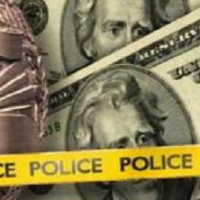“Overpoliced” California Cities Dominate Study Showing Cost-Effectiveness of More Cops

If we want less violent crime, we should hire more police. Although this approach might seem obvious, in fact many studies over the past few decades cast serious doubt over whether it really works. Now, two researchers at the University of California at Berkeley argue that their statistical analysis of 50 years of national urban crime data shows that many cities could reduce crime, especially violent crime, by deploying more police.
Aaron Chalfin, a doctoral candidate in Public Policy, and law professor Justin McCrary presented a paper last week at the annual conference of the Association of Public Policy Analysis and Management in Baltimore scrutinizing levels of police staffing and crime rates in medium to large American cities between 1960 and 2010. Over that half-century, they estimate that each dollar spent on police yields approximately $1.60 in reduced victimization costs, suggesting that many U.S. cities employ too few police. Victimization costs attempt to estimate a dollar value for the various losses suffered by crime victims.
Although Chalfin and McCrary found that many cities deploy too few police, this was not true across the board. By comparing the costs and benefits of policing in various cities, for example, they found that every dollar spent on policing in Sunnyvale (pop.: 140,095) yields only 20 cents in crime reduction benefits, while every dollar spent on policing in Gary, Indiana (pop.: 80,294) yields $14 in such benefits. This appears to be an effect of the law of diminishing returns: Sunnyvale boasts low crime rates, while Gary has one of the nation’s highest crime rates.
California dominated the list of what the study called “overpoliced cities,” with 13 out of 30 spots. Sunnyvale, at the top, was joined by Torrance (3), Palo Alto (4), Santa Monica (7), Burbank (10), Alameda (13), San Mateo (17), Santa Barbara (20), Santa Clara (22), Berkeley (25), Glendale (28), Fullerton (29) and Alhambra (30).
The state was also represented in the bottom 30 “underpoliced cities” by San Bernardino, Oakland and Richmond.
The authors also confirm a controversial finding made by previous investigators that police reduce violent crime more than property crime.
–Matt Bewig
To Learn More:
The Effect of Police on Crime: New Evidence from U.S. Cities, 1960-2010 (by Aaron Chalfin & Justin McCrary, UC Berkeley) (pdf)
- Top Stories
- Controversies
- Where is the Money Going?
- California and the Nation
- Appointments and Resignations
- Unusual News
- Latest News
- California Forbids U.S. Immigration Agents from Pretending to be Police
- California Lawmakers Urged to Strip “Self-Dealing” Tax Board of Its Duties
- Big Oil’s Grip on California
- Santa Cruz Police See Homeland Security Betrayal in Use of Gang Roundup as Cover for Immigration Raid
- Oil Companies Face Deadline to Stop Polluting California Groundwater





